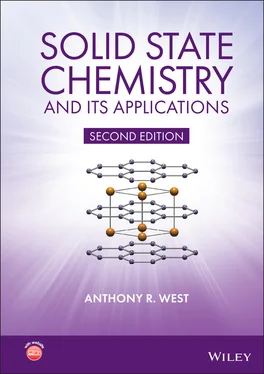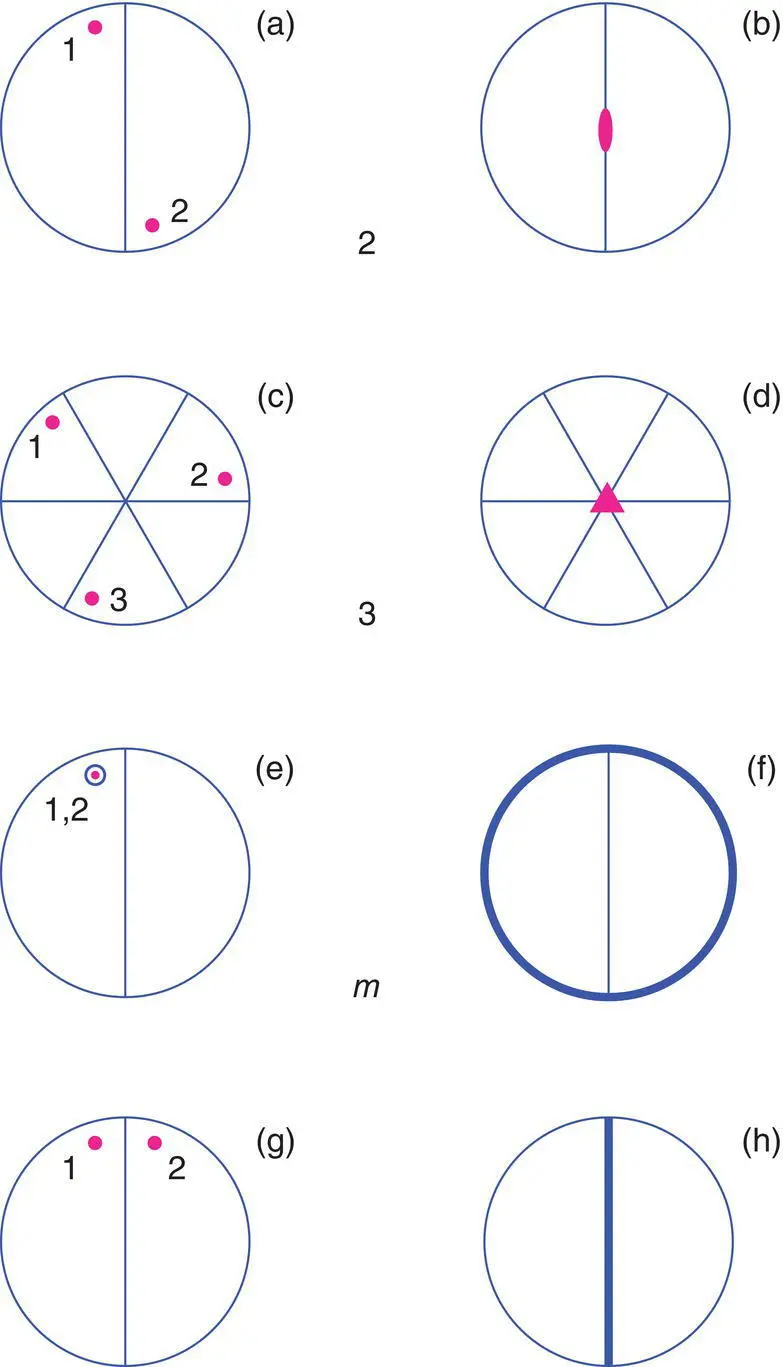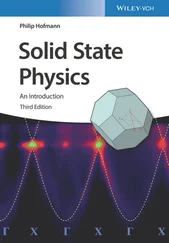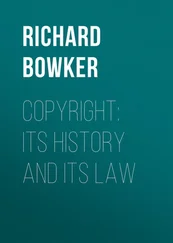Anthony R. West - Solid State Chemistry and its Applications
Здесь есть возможность читать онлайн «Anthony R. West - Solid State Chemistry and its Applications» — ознакомительный отрывок электронной книги совершенно бесплатно, а после прочтения отрывка купить полную версию. В некоторых случаях можно слушать аудио, скачать через торрент в формате fb2 и присутствует краткое содержание. Жанр: unrecognised, на английском языке. Описание произведения, (предисловие) а так же отзывы посетителей доступны на портале библиотеки ЛибКат.
- Название:Solid State Chemistry and its Applications
- Автор:
- Жанр:
- Год:неизвестен
- ISBN:нет данных
- Рейтинг книги:4 / 5. Голосов: 1
-
Избранное:Добавить в избранное
- Отзывы:
-
Ваша оценка:
Solid State Chemistry and its Applications: краткое содержание, описание и аннотация
Предлагаем к чтению аннотацию, описание, краткое содержание или предисловие (зависит от того, что написал сам автор книги «Solid State Chemistry and its Applications»). Если вы не нашли необходимую информацию о книге — напишите в комментариях, мы постараемся отыскать её.
A comprehensive treatment of solid state chemistry complete with supplementary material and full colour illustrations from a leading expert in the field. Solid State Chemistry and its Applications, Second Edition
Student Edition
Significant updates and new content in this second edition include:
A more extensive overview of important families of inorganic solids including spinels, perovskites, pyrochlores, garnets, Ruddlesden-Popper phases and many more New methods to synthesise inorganic solids, including sol-gel methods, combustion synthesis, atomic layer deposition, spray pyrolysis and microwave techniques Advances in electron microscopy, X-ray and electron spectroscopies New developments in electrical properties of materials, including high Tc superconductivity, lithium batteries, solid oxide fuel cells and smart windows Recent developments in optical properties, including fibre optics, solar cells and transparent conducting oxides Advances in magnetic properties including magnetoresistance and multiferroic materials Homogeneous and heterogeneous ceramics, characterization using impedance spectroscopy Thermoelectric materials, MXenes, low dimensional structures, memristors and many other functional materials Expanded coverage of glass, including metallic and fluoride glasses, cement and concrete, geopolymers, refractories and structural ceramics Overview of binary oxides of all the elements, their structures, properties and applications Featuring full color illustrations throughout, readers will also benefit from online supplementary materials including access to CrystalMaker® software and over 100 interactive crystal structure models.
Perfect for advanced students seeking a detailed treatment of solid state chemistry, this new edition of
will also earn a place as a desk reference in the libraries of experienced researchers in chemistry, crystallography, physics, and materials science.

 does not have a separate graphical symbol other than that of the mirror plane equivalent to it.
does not have a separate graphical symbol other than that of the mirror plane equivalent to it.
 , 4/ m , 422, 4mm ,
, 4/ m , 422, 4mm ,  2 m , 4/ mmm
2 m , 4/ mmm , 32, 3 m ,
, 32, 3 m ,  m
m , 6/ m , 622, 6 mm ,
, 6/ m , 622, 6 mm ,  m 2, 6/ mmm
m 2, 6/ mmm m , m 3 m
m , m 3 m

 and (b, c)
and (b, c)  .
. is shown in Fig. 1.54(a). It does not have a symbolic representation and hence, only one diagram showing the equivalent positions is given. Recall that a centre of symmetry represents two identical positions that are equidistant from the centre of an object and lie on a straight line passing through its centre. This generates the two equivalent positions shown in (a): 1 lies above the plane; 2 lies on a straight line that passes through the centre, to an equal distance the other side and therefore, is below the plane.
is shown in Fig. 1.54(a). It does not have a symbolic representation and hence, only one diagram showing the equivalent positions is given. Recall that a centre of symmetry represents two identical positions that are equidistant from the centre of an object and lie on a straight line passing through its centre. This generates the two equivalent positions shown in (a): 1 lies above the plane; 2 lies on a straight line that passes through the centre, to an equal distance the other side and therefore, is below the plane. ,
,  ,
,  and
and  are combined symmetry operations involving the rotation component, and inversion through the centre, as in
are combined symmetry operations involving the rotation component, and inversion through the centre, as in  . The trigonal point group
. The trigonal point group  is shown in Fig. 1.54(b, c). The symbol for
is shown in Fig. 1.54(b, c). The symbol for  , in (c), is a solid triangle with an open circular centre. Six equivalent positions (b) are generated, 1–6, before finally returning to starting position 1. Point groups
, in (c), is a solid triangle with an open circular centre. Six equivalent positions (b) are generated, 1–6, before finally returning to starting position 1. Point groups  ,
,  and
and  are shown in Appendix E; readers may like to confirm for themselves that point group
are shown in Appendix E; readers may like to confirm for themselves that point group  is equivalent to a mirror plane perpendicular to the 2‐fold inversion axis.
is equivalent to a mirror plane perpendicular to the 2‐fold inversion axis.










